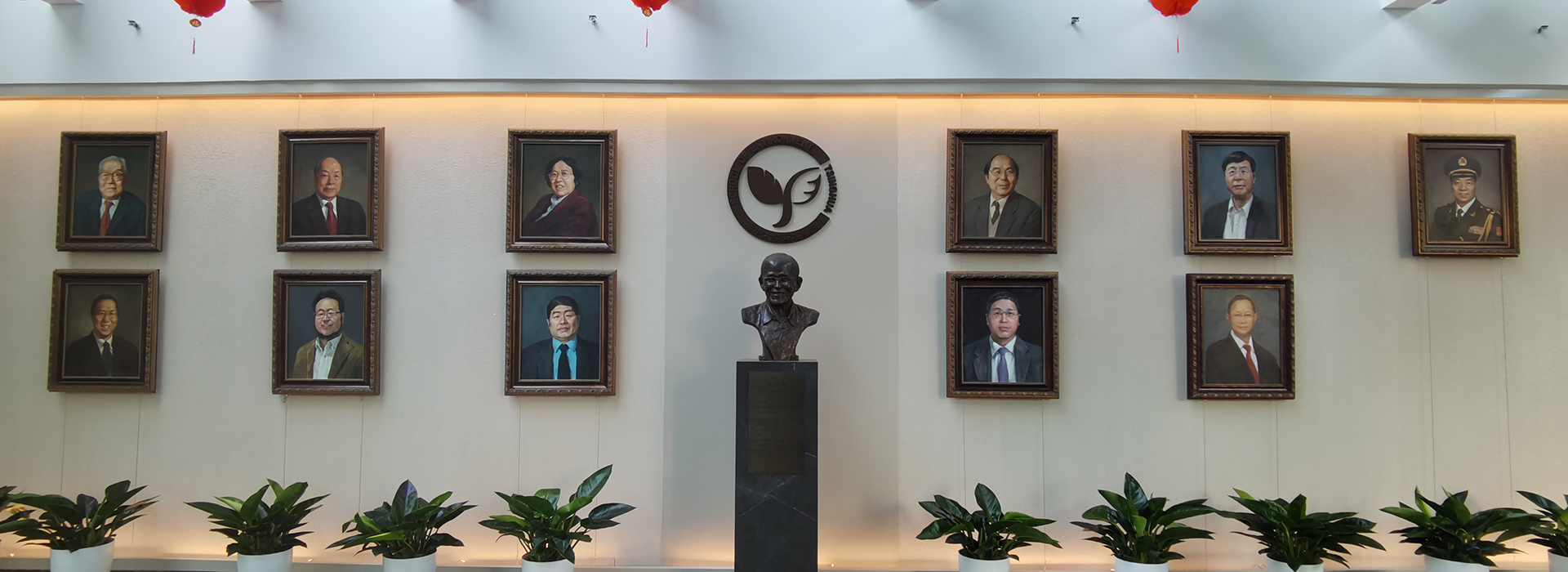(My group has open positions for PhD students, postdoctoral researchers, and visiting scientists. Please contact jiangjk@tsinghua.edu.cn)
Selected Publications(see a full list):
1. Precursor apportionment of atmospheric oxygenated organic molecules using a machine learning method
Qiao et al., Environmental Science: Atmospheres, 2023, 3 (1): 230-237
2. Increasing contribution of nighttime nitrogen chemistry to wintertime haze formation in Beijing observed during COVID-19 lockdowns
Yan et al., Nature Geoscience ,2023, 16 (11): 975-981
3. Achieving health-oriented air pollution control requires integrating unequal toxicities of industrial particles
Wu et al., Nature Communications, 2023, 14(1): 6491
4. Unified theoretical framework for black carbon mixing state allows greater accuracy of climate effect estimation
Wang et al., Nature Communications, 2023, 14(1): 2703
5. Online detection of airborne nanoparticle composition with mass spectrometry: Recent advances, challenges, and opportunities
Li et al., TrAC Trends in Analytical Chemistry, 2023, 166: 117195
6. Two pan-SARS-CoV-2 nanobodies and their multivalent derivatives effectively prevent Omicron infections in mice
Liu et al., Cell Reports Medicine, 2023, 4 (2): 100918
7. Single-atom catalysts: promotors of highly sensitive and selective sensors
Li et al., Chemical Society Reviews, 2023, 52 (15): 5088-5134
8. China’s public health initiatives for climate change adaptation
Ji et al., The Lancet Regional Health - Western Pacific, 2023, 40: 100965
9. Secondary organic aerosol formed by condensing anthropogenic vapours over China’s megacities
Nie et al., Nature Geoscience, 2022, 15: 255-261
10. Toxic potency-adjusted control of air pollution for solid fuel combustion
Wu et al., Nature Energy, 2022, 7: 194-202
11. The missing base molecules in atmospheric acid–base nucleation
Cai et al., National Science Review, 2022, 9 (10): nwac137
12. Application of smog chambers in atmospheric process studies
Chu et al., National Science Review, 2022, 9: nwab103
13. Liquid-liquid phase separation reduces radiative absorption by aged black carbon aerosols
Zhang et al., Communications Earth & Environment, 2022, 3 (1): 128
14. Cr-Doped Pd Metallene Endows a Practical Formaldehyde Sensor New Limit and High Selectivity
Zhang et al., Advanced Materials, 2022, 34(2): 2105276
15. Observation and Source Apportionment of Atmospheric Alkaline Gases in Urban Beijing
Zhu et al., Environmental Science & Technology, 2022, 56(24): 17545-17555
16. Ecological Barrier Deterioration Driven by Human Activities Poses Fatal Threats to Public Health due to Emerging Infectious Diseases
Zhang et al., Engineering, 2022, 10: 155-166
17. Measuring size distributions of atmospheric aerosols using natural air ions
Li et al., Aerosol Science and Technology, 2022, 56: 655-664
18. Emissions of Ammonia and Other Nitrogen-Containing Volatile Organic Compounds from Motor Vehicles under Low-Speed Driving Conditions
Yang et al., Environ. Sci. & Technol., 2022, 56: 5440-5447
19. Evaluation of a cost-effective roadside sensor platform for identifying high emitters
Shen et al., Science of The Total Environment, 2022, 816: 151609
20. Sulfuric acid-amine nucleation in urban Beijing
Cai et al., Atmospheric Chemistry and Physics, 2021, 21(4): 2457-2468
21. Acid–Base Clusters during Atmospheric New Particle Formation in Urban Beijing
Yin et al., Environmental Science & Technology, 2021, 55: 10994-11005
22. Contribution of Atmospheric Oxygenated Organic Compounds to Particle Growth in an Urban Environment
Qiao et al., Environmental Science & Technology, 2021, 55: 13646-13656
23. An indicator for sulfuric acid–amine nucleation in atmospheric environments
Cai et al., Aerosol Science and Technology, 2021, 55: 1059-1069
24. Composition of Ultrafine Particles in Urban Beijing: Measurement Using a Thermal Desorption Chemical Ionization Mass Spectrometer
Li et al., Environmental science & technology, 2021, 55(5): 2859-2868
25. Improving data reliability: A quality control practice for low-cost PM2.5 sensor network
Qiao et al., Science of The Total Environment, 2021, 779: 146381
26. Seasonal Characteristics of New Particle Formation and Growth in Urban Beijing
Deng et al., Environmental Science & Technology, 2020, 54: 8547-8557
27. Quantifying the Deposition of Airborne Particulate Matter Pollution on Skin Using Elemental Markers
Morgan et al., Environmental Science & Technology, 2020, 54(24): 15958-15967
28. Air pollutant emissions from coal-fired power plants in China over the past two decades
Wang et al., Science of The Total Environment, 2020, 741: 140326
29. Transmission via aerosols: Plausible differences among emerging coronaviruses
Jiang et al., Aerosol Science and Technology, 2020, 54: 865-868
30. Comprehensive two-dimensional gas chromatography mass spectrometry with a solid-state thermal modulator for in-situ speciated measurement of organic aerosols
An et al., Journal of Chromatography A, 2020, 1625: 461336
31. Evaluating Airborne Condensable Particulate Matter Measurement Methods in Typical Stationary Sources in China
Wang et al., Environmental Science & Technology, 2020, 54: 1363-1371
32. Significant ultrafine particle emissions from residential solid fuel combustion
Wang et al., Science of The Total Environment, 2020, 715, 136992
33. Models for estimating nanoparticle transmission efficiency through an adverse axial electric field
Cai et al., Aerosol Science and Technology, 2020, 54: 332-341
34. Transmission of charged nanoparticles through the DMA adverse axial electric field and its improvement
Cai et al., Aerosol Science and Technology, 2020, 54: 21-32
35. Cobalt Nanoparticles and Atomic Sites in Nitrogen-Doped Carbon Frameworks for Highly Sensitive Sensing of Hydrogen Peroxide
Li et al., Small, 2020, 16: 1902860
36. Theoretical and experimental analysis of the core sampling method: Reducing diffusional losses in aerosol sampling line
Fu, et al., Aerosol Science and Technology, 2019, 53: 793-801
37. A soft X-ray unipolar charger for ultrafine particles
Chen et al., Journal of Aerosol Science, 2019, 133: 66-71
38. Improving thermal desorption aerosol gas chromatography using a dual-trap design
Ren et al., Journal of Chromatography A, 2019, 1599: 247-252
39. Quartz filter-based thermal desorption gas chromatography mass spectrometry for in-situ molecular level measurement of ambient organic aerosols
Ren et al., Journal of Chromatography A, 2019, 1589: 141-148
40. Relative humidity effect on the formation of highly oxidized molecules and new particles during monoterpene oxidation
Li, et al., Atmospheric Chemistry and Physics, 2019, 19: 1555-1570
41. Characteristics of filterable and condensable particulate matter emitted from two waste incineration power plants in China
Wang et al., Science of the Total Environment, 2018, 639: 695-704
42. Stationary characteristics in bipolar diffusion charging of aerosols: Improving the performance of electrical mobility size spectrometers
Chen et al., Aerosol Science and Technology, 2018, 52: 809-813
43. Retrieving the ion mobility ratio and aerosol charge fractions for a neutralizer in real-world applications
Chen et al., Aerosol Science and Technology, 2018, 52: 1145-1155
44. Data inversion methods to determine sub-3 nm aerosol size distributions using the particle size magnifier
Cai et al., Atmospheric Measurement Techniques, 2018, 11: 4477-4491
45. Nascent soot particle size distributions down to 1 nm from a laminar premixed burner-stabilized stagnation ethylene flame
Tang et al., Proceedings of the Combustion Institute, 2017, 36: 993-1000
46. Aerosol surface area concentration: a governing factor in new particle formation in Beijing
Cai et al., Atmos. Chem. Phys., 2017, 17: 12327-12340
47. A new balance formula to estimate new particle formation rate: reevaluating the effect of coagulation scavenging
Cai et al., Atmos. Chem. Phys., 2017, 17: 12659-12675
48. A miniature cylindrical differential mobility analyzer for sub-3 nm particle sizing
Cai et al., Journal of Aerosol Science, 2017, 106: 111-119
49. Evolution of Submicrometer Organic Aerosols during a Complete Residential Coal Combustion Process
Zhou et al., Environmental Science & Technology, 2016, 50: 7861-7869
50. A spectrometer for measuring particle size distributions in the range of 3 nm to 10 μm
Liu et al., Frontiers of Environmental Science & Engineering, 2016, 10: 63-72
51. Gaseous Ammonia Emissions from Coal and Biomass Combustion in Household Stoves with Different Combustion Efficiencies
Li et al., Environmental Science & Technology Letters, 2016, 3: 98-103
52. Optimized DNA extraction and metagenomic sequencing of airborne microbial communities
Jiang et al., Nature Protocols, 2015, 10: 768
53. Laboratory Evaluation and Calibration of Three Low-Cost Particle Sensors for Particulate Matter Measurement
Wang et al., Aerosol Science and Technology, 2015, 49: 1063-1077
54. Aerosol Charge Fractions Downstream of Six Bipolar Chargers: Effects of Ion Source, Source Activity, and Flowrate
Jiang et al., Aerosol Science and Technology, 2014, 48: 1207-1216
55. Inhalable Microorganisms in Beijing’s PM2.5 and PM10 Pollutants during a Severe Smog Event
Cao et al., Environmental Science & Technology, 2014, 48: 1499-1507
56. Characteristics and health impacts of particulate matter pollution in China (2001–2011)
Cheng et al., Atmospheric Environment, 2013, 65: 186-194
57. Mobility particle size spectrometers: harmonization of technical standards and data structure to facilitate high quality long-term observations of atmospheric particle number size distributions
Wiedensohler et al., Atmospheric Measurement Techniques, 2012, 5: 657-685
58. Acid-base chemical reaction model for nucleation rates in the polluted atmospheric boundary layer
Chen et al., PNAS, 2012, 109: 18713-18718
59. Role of Surface Area, Primary Particle Size, and Crystal Phase on Titanium Dioxide Nanoparticle Dispersion Properties
Suttiponparnit et al., Nanoscale Research Letters, 2011, 6:
60. First Measurements of Neutral Atmospheric Cluster and 1–2 nm Particle Number Size Distributions During Nucleation Events
Jiang et al., Aerosol Science and Technology, 2011, 45: ii-v
61. Electrical Mobility Spectrometer Using a Diethylene Glycol Condensation Particle Counter for Measurement of Aerosol Size Distributions Down to 1 nm
Jiang et al., Aerosol Science and Technology, 2011, 45: 510 - 521
62. Transfer Functions and Penetrations of Five Differential Mobility Analyzers for Sub-2 nm Particle Classification
Jiang et al., Aerosol Science and Technology, 2011, 45: 480 - 492
63. Ambient Pressure Proton Transfer Mass Spectrometry: Detection of Amines and Ammonia
Hanson et al., Environmental Science & Technology, 2011, 45: 8881-8888
64. Characterization of size, surface charge, and agglomeration state of nanoparticle dispersions for toxicological studies
Jiang et al., Journal of Nanoparticle Research, 2009, 11: 77-89
65. Does nanoparticle activity depend upon size and crystal phase?
Jiang et al., Nanotoxicology, 2008, 2: 33 - 42
66. Model for nanoparticle charging by diffusion, direct photoionization, and thermionization mechanisms
Jiang et al., Journal of Electrostatics, 2007, 65: 209-220
67. Synthesis of nanoparticles in a flame aerosol reactor with independent and strict control of their size, crystal phase and morphology
Jiang et al., Nanotechnology, 2007, 18: 285603
68. Anthropogenic mercury emissions in China
Streets et al., Atmospheric Environment, 2005, 39: 7789-7806





